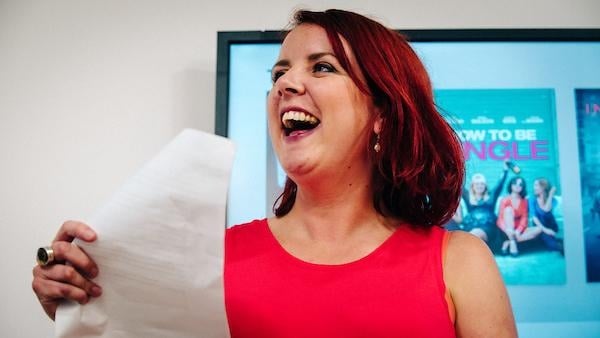.jpg?width=500&name=Reward%20Gateway%20Hackathon%20-%20Cat%20Lewis%20(wecompress.com).jpg)
5 min read
Earlier this year, my role changed from solely managing our internal communications to stepping up as our Head of Global Engagement – and it’s opened up my eyes to how many different challenges there are in overcoming obstacles to improve engagement at organizations.
In my first post, I took a look at how to start a role in employee engagement. Next, I thought I’d skip ahead to the stuff you’re really interested in: Where I stumbled, fell and, ultimately, picked myself back up. Here are the top five lessons I learned from that first 100 days:
Lesson 1: Research is key
I always knew that making changes would be a key part of my new role – from tiny ones to huge ones. And to make those changes, I would need buy-in. It’s not so different than building a business case for anything, really. So I invested a lot of time in working out the best ways to work with the Leadership Team.
How do they best receive data reports? What’s the best way to share a proposal with them? How was I going to be most effective working in collaboration with them?
I found that effective communication – lots of asking questions and even more listening to the answers – set me on the best path to begin instigating worthwhile change and improving collaboration among teams.
Lesson 2: Not everything can be done immediately
As many people do, I put a lot of pressure on myself on that very first day to take incredible strides of progress. I quickly worked out that this was an impossible feat, and nobody but myself was expecting me to do this.
So I decided to prioritize. What did I need to sort fast? What did I need to get started now, so I could come back to it later? And of course, what could wait a few weeks? Or even months?!
My priority became hosting an all-company update, which coincided with our financial year kick-off. We looked at strategies for the business and forthcoming challenges, changes and focusses. It was held in my first four weeks and worked to put everyone on a level playing field.
Once everyone had access to the same information, my tasks became much more streamlined and quicker to get off the ground.
Lesson 3: You can’t make everyone happy
It’s only natural to want your changes to be wonderful for everyone. But that just isn’t realistic and setting yourself that goal will only make you feel like you’ve failed.
Instead, do what is best for the highest number of people. If 97% of the company are thrilled with a newly implemented change and 3% are not, that might actually be okay. If it’s not, check and then double-check that it’s actually a significant number of people.
Sometimes there’s only one person behind your negative feedback, so be sure to quantify it.
Ask for specific numbers and get names, and then speak with them directly. Negative feedback can get lost in translation and may, in fact, be more to do with an entirely different issue than you or even they realized at first.
Lesson 4: Honesty is the best policy
We use our own employee engagement technology to communicate with our employees, always ensuring that we’re catering to all different types of learners with a mixture of text, images, videos and more. From our end, we make all of our communications interactive – staff can comment, upload their own media and share updates.
.jpg?width=500&name=smartmockups_jmccim2j%20(wecompress.com).jpg)
We also have a policy of openness and honesty wherever possible. As I said in my previous blog, Top do’s and dont’s to create better communication in the workplace, people can be difficult if they don’t understand what is going on around them. Trust your staff with information and in turn, well, they’ll trust you a whole lot more.
Lesson 5: Sometimes less is more
A huge learning curve for me at the start of my new role was understanding how to best use our employee survey tool. Retrospectively, I wish I hadn’t chosen to survey my colleagues quite so regularly. Regular and frequent might seem like the best, but it might not be if you can’t make any actual changes after each survey. I quickly realized that this would simply give me too much data. I would be hit with something new each week and, as such, there would never be time to implement effective change.
Instead, I decided that we would do our company-wide surveys quarterly.
And as a result, we can now analyze the accumulated data, plan solutions, fix the issue and offer further training before tackling the next hurdle!
If you’re in a similar position, I’d suggest kicking off with one, big data crunch, and then keep tabs on it with regular checks to see how you’re doing. Our survey tools let you customize the frequency, so luckily, this was an easy fix to make!
Finally, and on the topic of seeing how you’re doing, be sure to note your own progress. Along the way, keep reminding yourself just how much you’ve already achieved in the role, both professionally and personally. The likelihood is, you’ll be surprised at how far you’ve already come. And don’t be afraid to be proud, either. You should be! I know I am.

 Catrin Lewis
Catrin Lewis




